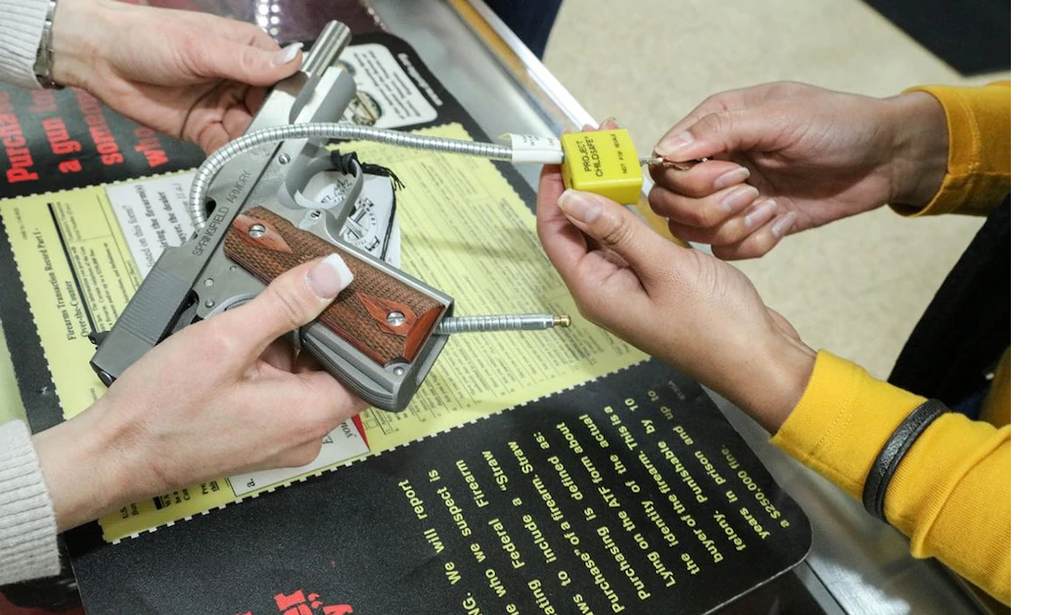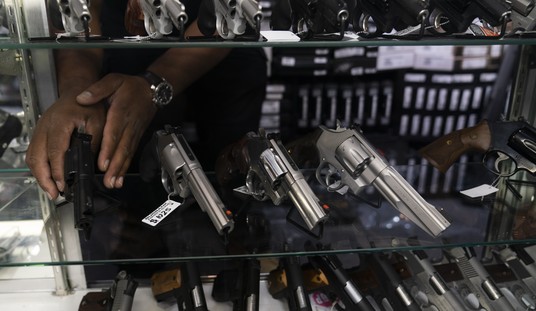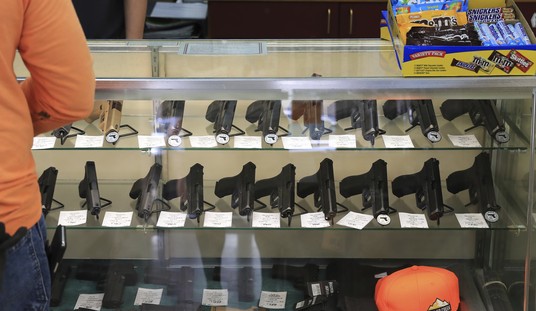Editor’s note- This piece by John Petrolino was written before Saturday’s shooting in Buffalo, New York, but it’s even more timely now that we know the suspect in that case had been evaluated and cleared by mental health professionals after threatening to shoot up his high school last June. Not only did that evaluation fail to find any evidence that the suspect posed a threat to himself or others, but as John details below, the law is causing others who legitimately pose no threat to be stripped of their right to keep and bear arms.
I first was exposed to Sandra “Sandy” Richardson when listening to the Walk the Talk America (WTTA) Podcast sometime last year. I’ve been tuning into the WTTA podcast since shortly after Michael Sodini and Jake Wiskerchen started recording it, and haven’t missed a show yet. Sodini and Wiskerchen, whom I consider friends and colleagues, had reached out to me earlier this year about Richardson and her story. I had vaguely remembered hearing her account of battling through the egregious and unconstitutional system that’s in place in New York State. In February, Richardson and I got on the phone and she blew my mind. The short story is that Richardson had her guns seized because she sought help from a mental health professional.
The episode with Richardson, number 43, came out about a year ago, on May 31, 2022. In talking about her story, she opened up to Wiskerchen and Sodini:
So I’m here today basically, to share my story of what happened last year. And quite frankly, it’s…it’s ongoing. So a little, little teaser there for you know, this is not the end. Because this is something that should not happen to anybody.
Richardson’s teaser was an understatement, because the amount of information and data that she’s collected in the last two years is somewhat epic.
It all started in April of 2020 when Richardson described going through a period of time that left her super stressed, and there was a lot going on in her life. Given the timeline, many Americans, and really citizens of Earth, could probably relate. When she and I chatted, we both agreed it did not really matter the what that stressed her enough to move her to seek help, just that she did. So if someone asked me “Why did Sandy go and see a shrink anyhow?” I can truthfully reply by saying “I don’t really know.” We can describe those motivations as “stressors”, a relatable thing to everyone. Richardson talked about that while alluding to the issues at hand:
And so for any person, that pile of stressors is different. But what is the same is that they occur. And what is the same is that we should all feel safe in seeking help or guidance to deal with it.
There is a provision in New York’s SAFE Act, the Mental Hygiene Law (MHL) 9.46, that complicated things for Richardson. The complications of her story actually run fairly deep. With every bit of information she picked up along the way, she found more mishaps, and what I’ll personally refer to as maleficence.
One of the things Richardson learned was that the records generated from seeing both a social worker and physician during her outpatient session had “falsehoods” in them. There were things that she noted were taken completely out of context, and things were falsely documented. Was it on purpose? Was it incompetence? Was it both? These things in her file she only was able to learn about after what we’ll call the “knock at the door”.
The MHL 9.46 has elements to it that are what we can informally refer to as “duty to inform” provisions. These are similar to any other duty to inform laws, however the SAFE Act takes them to a whole new level. Your run-of-the-mill duty to inform law might be a provision where someone is legally bound to report to the authorities that they know someone intends to, or has reasonable suspicion to believe they may harm themselves, another, or end their own life. Richardson said specifically of the law in New York:
…in New York State, this Mental Hygiene Law 9.46, a health care provider can report somebody that they feel is a potential…you know, harm to themselves or others. And the reporting standard is Mental Hygiene Law. 9.01, which basically says, there has to be a threat of imminent harm to self or others.
In Richardson’s case, when she was directly asked if she intended to harm herself or someone else, she said “I have no thoughts, intentions, or plans to hurt myself or anyone else.” Somehow that admission was not relevant enough to make it into her file. She was reported on anyway. Falsely. Concerning the actual report, Richardson said of it:
And fortunately, the social worker documented that she filed the report. And I feel strongly in outing her because what she did was wrong. Her name is Alexandra Stark.
The reporting process involves the care provider making their submission electronically to the State Office of NICS Appeals and SAFE Act. That office feeds it to the State office of Mental Health. From there, the report gets siphoned to the Director of Community Services, who checks that a mandated reporter filed the report. The report must indicate a risk of harm. At no time is there any validation of the claims being made by the reporter, the paperwork is pretty much rubber stamped. Richardson figured out the state cross references the report with the database of people that have pistol permits in the State of New York. If someone doesn’t have a permit noted in the database, they wouldn’t be notified a report was filed against them. Victims of this law aren’t told they’re on the list and might find out in the event they apply for a pistol permit or attempt to buy a gun.
Five weeks after the report was filed against Richardson, the report about her being an imminent threat mind you, she got a phone call telling her she needed to surrender her firearms. This was how she learned the report was filed. The person on the phone said they were with the Sheriff’s department. Richardson, rightfully not satisfied with a phone call, stated that she wanted this all in writing. Shortly after the call, an order to show cause with a court date did come to her via mail. All the firearms in her home, including her husband’s, were ordered to be surrendered.
At that point in time, Richardson found herself disarmed because she sought medical care. Richardson’s Second Amendment rights were usurped because of a false filing. How do we know it was a false filing? She did have her day in court to challenge the report. When she had her day in court, she was granted her rights back immediately, with the firearms being ordered to be returned. She said that “The court ruled that the report was arbitrary capricious, or an abuse of discretion.” Richardson got back her firearm license and firearms. That’s not to say there’s been no harm, no foul.
This was a process for Richardson to go through. As she mentioned, this is something that no one should have to suffer though, especially persons who are nonviolent. An example, someone that happens to be singing the blues, one of the many legitimate reasons to seek care, should not be punished for desiring cure. If a person has stressors enough to seek mental health help or guidance, how do these authorities think a person is going to fare after executing such an order on them, without them being an imminent threat? I’m no clinician, but I’m going to say it will exacerbate the situation.
Unfortunately Richardson’s story is not an anomaly. In fact, the State of New York unwittingly created a warrior that’s pledged to uncover and fight this egregious portion of the SAFE Act. In talking to and communicating with Richardson, things actually got overwhelming quickly…mainly because she gathered so much data and information about these types of situations, and then started sharing it all with me like a broken levy. It was difficult to drink from the firehose I was provided with. When I started that first hour long phone call with her, I did not know that Sandy would create a superstorm of material on the topic that needs coverage.
This is Part 1 of a series of several articles I intend on writing about the NY SAFE Act in regards to MHL 9.46. In future parts, with Richardson’s help, I’m going to be exploring other topics, such as a deeper look into the constitutionality of the law, the effects on people’s willingness to seek mental health help, meeting more victims and hearing their stories, and any other grubs that might get turned up while pouring through reams of research. It’s our hope that in sharing Richardson’s story, and what we have learned from it, we’ll better be able to communicate the need for and lobby for policy change, and the nullification of such harmful laws. That, and raise awareness that just because someone might need a little corrective rudder in their lives does not mean they’re off on a dangerous course.
If you’d like to listen to the Walk the Talk America Episode featuring Sandy Richardson’s story, check it out in the embed below or by clicking HERE.








Join the conversation as a VIP Member